I am home today with a powerful cold and intense laryngitis. My thoughts, quite logically turned to soup and digging through the vegetable drawer and pantry I found I had the ingredients to cook up the perfect soup for late fall, borschch (the Russian word ends with the letter “щ” transliterated “shch,” not with a “t’). Soup is very much a part of Russian and Ukrainian cuisine, often served as a first course for the main meal, or eaten by itself as a lighter supper, always with black or white bread. In tougher times I remember arriving for a visit with a friend and finding only a soup bone and a few vegetables in the fridge. She brought home a loaf of bread, and quickly put together a soup that that fed the whole family for an evening meal. Soup, whether weathering a cold or weathering tough times, will get you through.
I have, over the years, enjoyed asking people in Russian and Ukraine to tell me how they make borschch. The answers are as varied as their recipes, ranging from “red” borshch made with beets and sometimes tomato, to “green” borshch made with sorrel, spinach or even nettles. I have had people say that borschch is Ukrainian or Russian, that it “must” have one thing or another to be a “true” borsch but when you gather the mindboggling range of variations it seems that borschch can be almost anything. Borshch is generally made with beef or chicken stock but can easily be made vegetarian with no loss of flavor; here I have added beans and cabbage to create a soup that is a hearty meal in itself. I’ve also added some celery. Celery is an unorthodox ingredient but here it adds depth to the soup base; leave it out for a more authentic flavor.
Vegetarian Borshch with Everything
4 cups vegetable stock plus 2 cups water
2 tbsp olive oil
1/4 cup chopped onion
2 medium carrots, peeled and cut into 1/2″ pieces
1 stalk celery, chopped (optional)
2 medium (2.5″ diameter) beets, peeled and cut into 1/2″ slices, then cut into 1/2″ wide strips
1 large or 2 medium potatoes, peeled and cut into 1/2″ cubes
1 bay leaf
2 tbsp. chopped dill, plus more for garnish
1 can diced tomatoes
1 can cannellini beans
1 cup cabbage, thinly sliced
sour cream, for garnish
Saute onions in oil over medium heat until the onions begin to brown. Turn heat down to medium-low. Add celery and carrot and cook, stirring for a few minutes. Add beets and potatoes, mix thoroughly, then add dill, bay leaf, broth, tomatoes and beans. Raise heat to medium high to bring to a boil, then lower, cover and simmer for 1 hour, adding water to reach desired thickness. Add salt to taste, then cabbage, if desired, and cook another hour. Serve with a dollop of sour cream and black bread on the side.




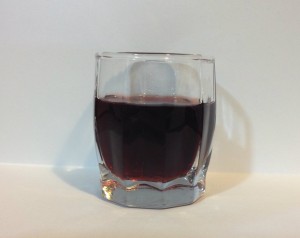
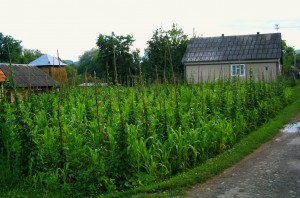
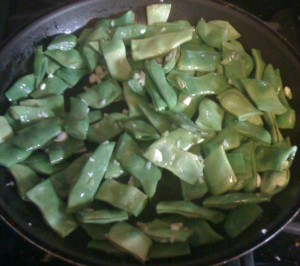
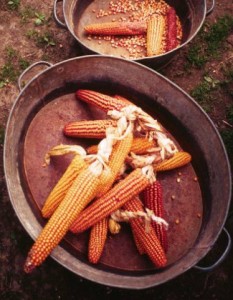
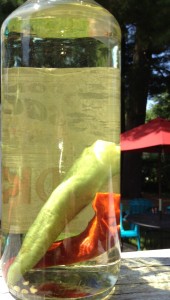
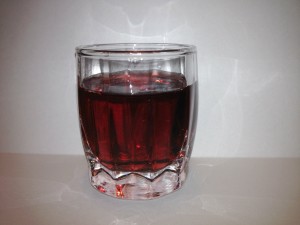

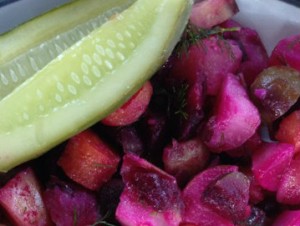
Recent Comments